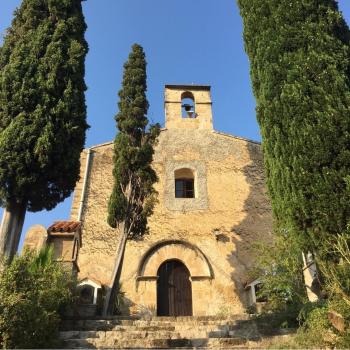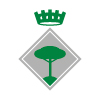
Ermita de la Mare de Déu de Dalt
The hermitage of Mare de Déu de Dalt is situated in the top part of the village. It dates back to the 13th century, with a Late Roman style, typical of the medieval Christian architecture of the Ebre region which is also tied to the militar orders that took part in the Christian Reconquista (Tortosa, 1148). The building only has one nave, a rectangular floor plan without apse, made with regular sized dimension stone and double slope roofs. The main door, which is original to the temple, is made with a perfectly semicircular voussoir arch.
Above is the bell tower with a one-eyed bell gable. A second door, open after the construction of the building in 1861 (as indicated in the plaque), gives direct access to the carrer de l'Ermita.
In the pointed arch building construction we can appreciate the image of the patroness saint of Benifallet, la Mare de Déu de Dalt, in the chancel. The choir, at the base of the church, has a coffered ceiling. The Pinyol family had their family tombs on the walls in the 13th and 14th century. Today, only the primitive heraldry remains with their latin inscriptions.
After the conquest of Tortosa by the forces of Ramon Berenguer IV in 1148-1149, the terrains were then divided among his noblemen. One of these noblemen was Berenguer Pinyol, to whom he handed over Costumà, near Benifallet. Around 1228, Bernat Pinyol, descendant of the aforementioned, expanded their terrains by purchasing Sellent and Cardó from Bernat Olicar Fuster's widow. The Pinyol family continued to be lords of the barony of Cardó, possibly until 1417 when it came into the possession of the abbot of the monastery of Benifassà. The barony of Costumà was taken over by the court in Tortosa around 1491, as Ferdinand the Catholic had ordered.
There are fresco paintings in the church that are related to its time of construction. The Calvari particularly stands out with small chapels that represent the life of Jesus.
The name Benifallet appears for the first time in documents dating back to 1153. The place already existed before the conquest of Tortosa. In 1208, the king Peter II of Aragon, passed the castle on to Guillem de Cervera who ended up giving it to the knights of the order of el Temple in 1215. Later, Benifallet returned to the royal jurisdiction through its link with the city of Tortosa. In 1207, Ramon Montcada would give these to Bernat Oliver Fuster, together with its boundaries and properties, to exploit it and establish crops.




